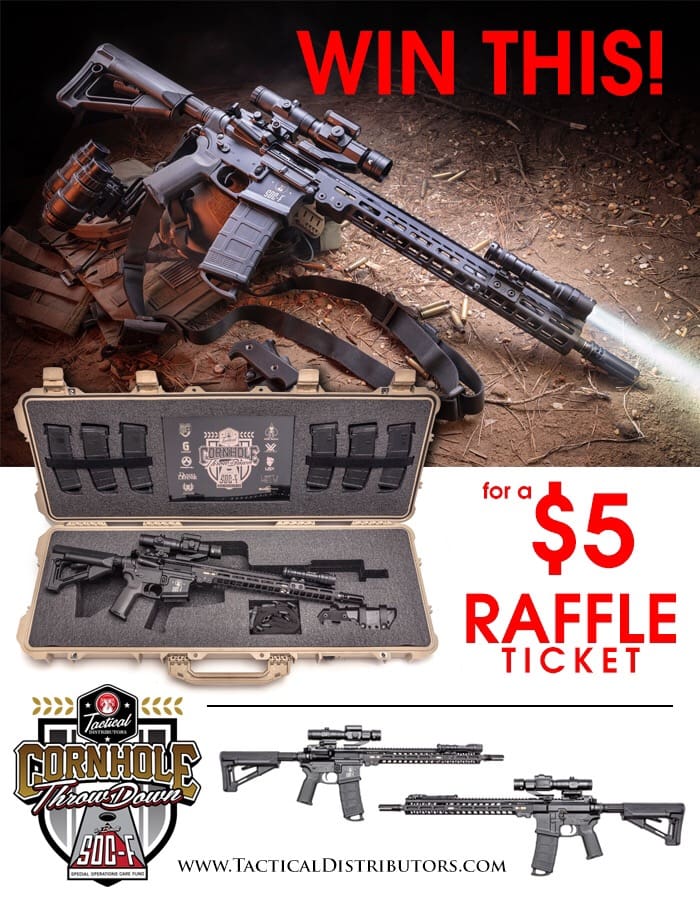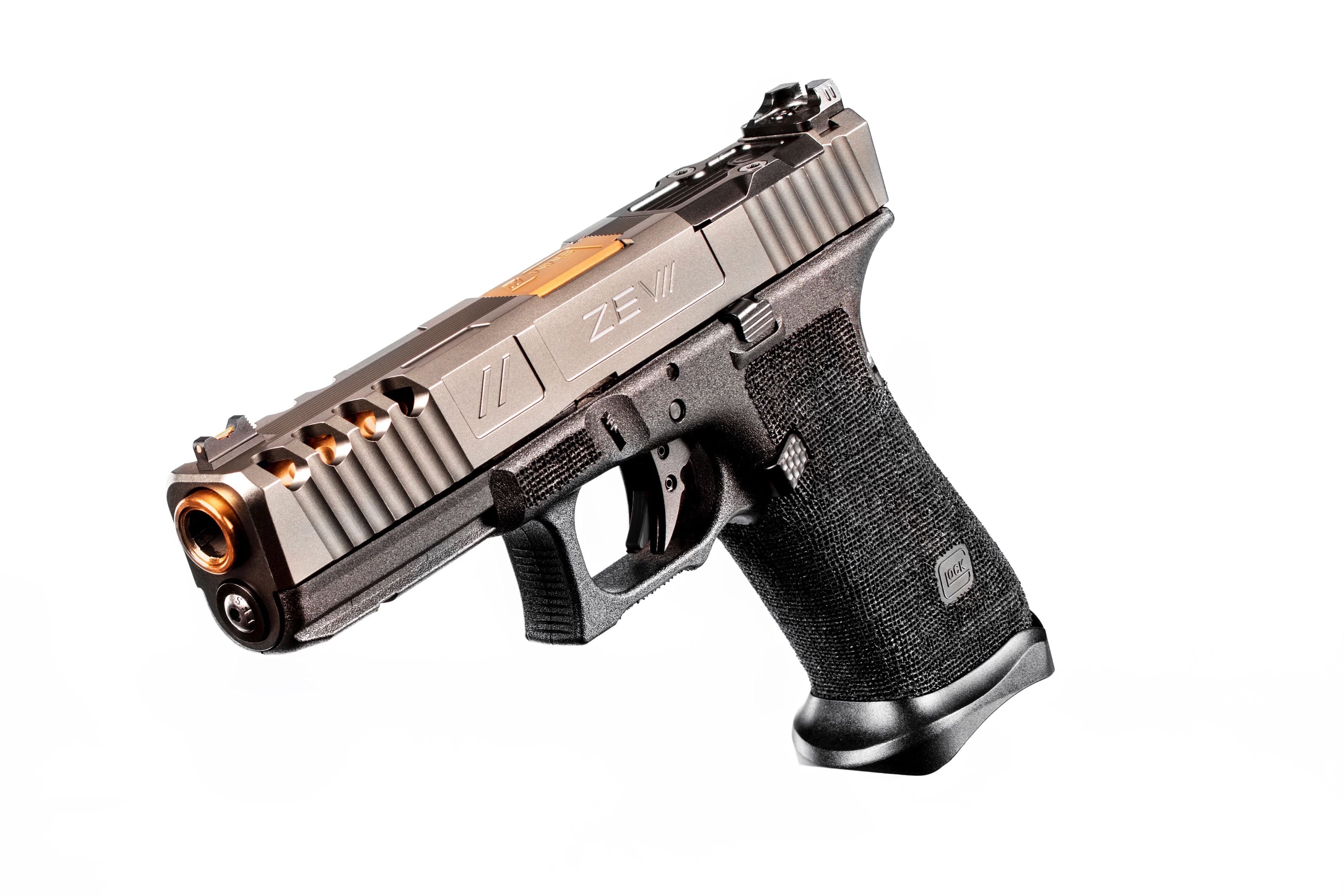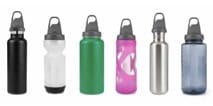
In my efforts to enhance the lethality of US weapon systems, my intent has always been to bring more people into the discussion. I do my best to not speak in absolutes, I intend to discuss things conceptually. This is so that experts in the finer points of cartridge construction, rifle barrel design, and ballistics could help drive the conversation. I am not some tier one super hero. I do not pretend to know everything and I would be highly skeptical of anyone who claims they do. But I have little fear in speaking out. I know this community has what it is needed to help drive the development of what could be the last cartridge based systems fielded by the U.S military.
There have been a few shifts in my thinking. The first was a firefight in 2003. Before then I was always under the notion that 5.56×45 mm projectiles would be modified to meet the demands of combat environments. When your perspective is based on ½ mass time velocity squared, 5.56×45 appears to the end all be all. But, I landed in Ft Bragg in November of 2003, with a new perspective.
I’ve mentioned the King and Queen of combat marksmanship. Energy Transferred into the target is the Queen and Shot Placement is the King. That these elements combine into the probability of killing the enemy. In the mid 2000’s a study was released that said 5.56 bullets need to yaw to transfer energy. If the 5.56 bullet does not Yaw or “tumble” shot placement becomes even more critical. It can kill without it, but the kill probability drops substantially. The Army study said a 5.56 bullet needs 4.75 inches of body penetration to Yaw. The people we have been shooting at for the last 16 years are not known for being more than 5 inches thick.
Until this study was released, I believed that the 77grain bullet and other larger 5.56 projectiles were going to be the answer in most applications. I then discussed with my father, a famous sniper in LE circles, the USMC’s experiences in the transition from the M14 to the M16. Stories of grown Marines on the verge of crying from frustration in shooting the M16 the first time are still visceral to him. Had we gotten it wrong all those years ago? Did we hamstring our forces for a half century in the name of lighter weight? Did we marry light, cheap, and easy at the expense of lethality and the military half mile? (I feel we should have ALL rifles capable of engaging targets to 800m not 500m as some have suggested)
Around this same time, I had a chance meeting with a staffer from Senator Tom Coburns office. One conversation led to an email. This email turned into hours of phone calls and a white paper. This white paper was sent to the Secretary of the Army and became the Individual Carbine program. At the time, I was a senior NCO assigned to a NG SF ODA. Not really the center of gravity in weapons modernization. But I kept in contact with Senator Coburn and his staff. I advocated for multiple weapons platforms that I thought would be effective solutions.
But what I tried to communicate more than anything else was the projectile. The bullet we were shooting was more important than the gun we were shooting it with. DoD was so tied to 5.56×45 that it there was no way any small arm wouldn’t use it. The Individual Carbine was cancelled a few years ago because none of the weapons offered any cost/performance benefit over the M4. It is the same reason the SCAR ® Mk.16 was cancelled. They all shoot the same 5.56×45 cartridge. Like I said the bullet we shoot is more important than the gun. No change in bullet equals no change in rifle, the M4 lived on.
Not long after this I went to the SCAR fielding at 1st Special Forces Group. While I liked the Mk.16, I completely forgot about it the second I shot the MK.17 SCAR®. It felt new, light, and a lot like the future. It was European so it had some quirks like ergonomics and not enough room for all the lights and lasers. But the aftermarket would resolve that. I started digging around in my network about the first field reports. I talked to friends at 2nd Ranger Bn. and 3rd SFG. I had faith this was going to be the system that was going put it all together. That the SCAR was a SOPMOD away from perfection. I figured the SCAR® was the answer. Now we can really knock people in the dirt. Simply put 7.62×51 is very lethal, and I could do house work with this gun.
But there is a problem. 7.62×51 does not have the legs to be effective past 1000m. For those that know there has been a long-standing need to have a +1000m battle rifle. I’ve known this for well over a decade. Until recently not many people listened. Some are now. One who agreed early was Jim Schatz.
I met Jim Schatz when he came to Seattle in 2012 for a small arms conference. I had a friend use his credentials to get me in. I remember it was in the convention center in Seattle, Washington. The same place I would meet Alan Handl just a few months later that same year.
I was advising the staff of Senator Coburn at the time on the Individual Carbine program. I had many questions and doubts about case less ammunition. How do you clear malfunctions? Can it fire out of a battery? What happens when it does? Jim told me about his experiences with an experimental case-less gun. Well if I had doubts before, they were concrete reasons now. It’s a conversation that makes me utterly scared of LSAT. While these solutions maybe the future, they have serious technical hurdles to overcome. Also, advancements in polymer cases will be probably too far advanced to make the effort cost effective.
I remember mentioning to Jim the bane of our existence, the PKM. That we had no proper counter. The Mk.13 had been fielded in 300WM. But two Sniper rifles vs area suppressing hit and run machine gun teams is a losing bet. He agreed and mentioned 6.5 calibers as a solution. I kept in touch with Jim irregularly over the years. I did not know Jim other than infrequent conversations and occasional emails. But it was very clear Jim was a person of immense experience, knowledge and professionalism. His was often the first opinion I would seek, which he freely gave. I found myself coming to some of his conclusions, long after independently covering the same ground. His input cannot be stated enough. I know everyone it the HK community knew exactly who Jim was. Unfortunately, Jim died recently. His death could not be more untimely. For the battle he had always advocated for is about to be fought. I feel it should be him telling this story.
I believe the answer to our problems is 6.5 projectiles. In my opinion, in a 2-cartridge solution. Handl Defense believes that all our solutions must fit three primary parameters. Something we produce must; improve performance, support doctrine, and show a cost benefit. Everything I’ve ever gotten approved in the military fit these three same tenets. It had to work better, be in left/right limits, and be inexpensive.
The new cartridges we adopt across the force needs to fit into these parameters as well. There is perfection and then there is effective. Perfection can be the enemy of the good. We can seek a solution that has the best performance. If it does not fit doctrinal applications and it is expensive, it will not get adopted. I see two solutions in both 7.62×51 and 5.56×45 sized platforms that fit the bill. The solutions we seek should emulate current supply chain structures as much as possible. This will reduce the cost of introduction an absolute key for adoption. I see four contenders each with their own strengths and weaknesses. I will discuss each of them superficially now. There will be a more in-depth discussion about each in their own blog post later.
What I see in small case solutions. While there are as many options as there are opinions, these two options reflect the most likely solutions to upgrade from 5.56×45.
The first option is 300 Blackout. Now before you shut down your browser or scream ” it is for suppressed use only!” There is more than meets the eye with this cartridge. Many people have been working diligently to get more out of 300 Blackout. Some of them have been successful. The issue with 300 BLK is that historically there has been much more bullet drop at comparable ranges to 5.56×45. Initial versions dropped the height of a 6 foot man in about 350-375 meters as opposed to about 450-475 meters for 5.56×45. Understand also 300 BLK required more training for the end user. You had to become more instinctive in compensating for bullet drop. Then there are issues with mechanical reliability in piston guns, they often had to be suppressed to get the extra back pressure to insure effective functioning. Handl Defense has been successful with 300 Blackout in our modified FN SCAR® 17s. But there was serious reworking of the operating group.
Regardless of its issues, the 300 BLK penetrates a target and begins to yaw in the target almost instantly. This means it carries a higher chance of being lethal round. There are some experiments with smaller 300 BLK rounds that show real promise. One 300 BLK producer who was using a blended metal technology that was claiming 700 meters with minimal bullet drop. There have been some projectiles under 120 grains that are getting 2600 fps and more. This opens the door for a EPR type of round in say 90-100 grains to make 300 BLK effective to almost 700 meters. I am sure this will require longer barrels (16 in and up). Then the fact this cartridge is based on 5.56×45, makes it a very viable option. The cost savings transitioning from 5.56×45 to 300 BLK would save millions upon millions of dollars and could be implemented very quickly.
But for a 5.56 based gun solution, 6.5 Grendel needs serious consideration. 6.5 Grendel does not use a 5.56×45 case. Even though it can hold more powder and provide higher velocities, the fact it would require a new case to be adopted is its most serious draw back. The expense of new cases on top of other new expenses cannot be discounted in these budgetary environments. One other drawback to the 6.5 Grendel is that it would also reduce the number of rounds in the magazine by four. But for these drawbacks you get serious performance that will fit in an M4. 6.5 Grendel cartridges shooting lighter bullets (90-100 grains) can achieve 2900 fps. There is equal and in certain cases superior performance from 6.5 Grendel to the 7.62×51 147 grain M80 round. Sierra states that their 123grain 6.5 bullet has 2900 joules of energy at 2700 feet per second. An EPR type M80A1 or M855A1 cartridge in 6.5 Grendel could be a powerful solution for 5.56×45 based rifles. This could be the 800 meter solution for the M4. But startup costs and fewer rounds per man in a light infantry role could very easily stymie 6.5 Grendel.
When it comes to 7.62×51 cartridge solutions, I believe the requirement is that it must fit in SR 25 pattern magazine. One other item I have always pushed for is a common 7.62×51 magazine. I believe any mid-sized cartridge must fit in legacy 7.62×51 systems with minimal retooling.
The first is 6.5 Creedmoor. My first experience with this cartridge was in early 2013. I was testing the AK conversion kit Handl Defense was developing for FN SCAR® Mk.17. Another shooter was a lane or two over with a 6.5 Creedmoor match gun. I knew of the cartridge but I had never fired it. He allowed me to fire about 30 rounds out of the rifle. It was instantly apparent this was a new beast. Flatter, faster, and seriously tight groupings. Not unlike the first time you ride a Ducati superbike, you had no idea you were going that fast.
6.5 Creedmoor is immensely popular in precision shooting circles. There is a lot of data, history, and success behind the cartridge. There are numerous advocates across all shooting disciplines. 6.5 Creedmoor has high-BC 6.5 mm bullets fired at good velocities (2700-3000fps). It has a very similar trajectory to 300 Win Mag. and less recoil than 7.62x51mm. When you look at match grade 7.62x51mm like the 175 grain M118LR, the 6.5 Creedmoor has about ¼ less wind drift. It will have about 100 inches less drop at 1000 yards. Then even with 20% lower mass, the 6.5 Creedmoor will retain 20% more energy. It will also hit the target at 1000 yards at about 300 fps more speed.
The 6.5 Creedmoor does not use 7.62×51 as its parent case, which could present the same issue with 6.5 Grendel. Which might mean the adoption of a new case system wide and the extra expenses that go with that. I have had discussions with some re-loaders who say you can make 6.5 Creedmoor from 7.62×51 cases. It just takes extra work. If used military brass can be converted to 6.5 Creedmoor easily, it will overcome its biggest stumbling block. Think of all the ASPs across the military. Think of the millions upon millions of rounds of 7.62×51. Without a way to use them and reuse them, it will be harder to justify the caliber change. Remember this decision will be made by Generals and Politicians. They do not care that one cartridge has 300 extra FPS. its BC is 4% higher, or 2% more accurate at 1000m. They care about cost to benefit ratio for project that pales in comparison of strategic impact to the JSF or Virginia class attack subs.
Which leads me to 260 Remington. This cartridge does not have a portion of the following that 6.5 Creedmoor does. It has almost all of the same performance in SAMMI spec versions as 6.5 Creedmoor. But 6.5 Creedmoor is more developed, better supported, and does perform that little better. For match shooters that little bit better is all the difference. But that does not mean that 6.5 Creedmoor is the better fit. 260 also flies much like 300 Win Mag. It also has the high BC bullets. It also will provide overmatch to the PKM.
260 Remington has two things going for it. The first is cost. To convert the metric tons of 7.62×51 brass to 260 Rem is far simpler and straight forward. Converting 7.62×51 to 6.5 Creedmoor might be just and extra step or an extra tool. When we must add an extra 3-5 cents per round and multiply it by 2 billion, that could be all the difference.
The other thing 260 Remington has going for it is a group in the government is working very hard to close the small performance gap between 260 and 6.5 CM. I do not have permission to disclose the particulars so do not bother. Handl Defense has supported this effort in the government. I understand there will be implications of bias. Regardless, an optimized 260 Remington could provide near equal the performance of 6.5 Creedmoor. It could do this cheaper both in initial startup costs and over the lifecycle of the program. This is a serious advantage that cannot be discounted.
I recognize there is a lot in this post, and others, that I do not discuss. For example, I do not discuss doctrinal applications, or if that one 6.5 bullet could work in both 5.56 cases and 7.62 cases, or bullet composition. That even when I delve into the calibers that there will be a lot I leave out. Even in these posts themselves, I cannot cover it all. These blog posts are not intended to be closing arguments. They are intended to start discussions. I know this is a highly contentious subject, so I expect vigorous debate. Additionally, the e-mails I have gotten recently and other input is not only welcome, it is exactly what I seek. It is what we should seek from each other.
My next blog post will be about the King and Queen of combat marksmanship; shot placement and energy transfer.
This blog post is in Honor of James Richard Schatz, Jr. Who died March 16, 2017. He was a paratrooper and an Army Marksmanship Unit Instructor. God Bless him and his family.
-Frank Plumb
The article was shared by permission from Handl Defense.



























































































































